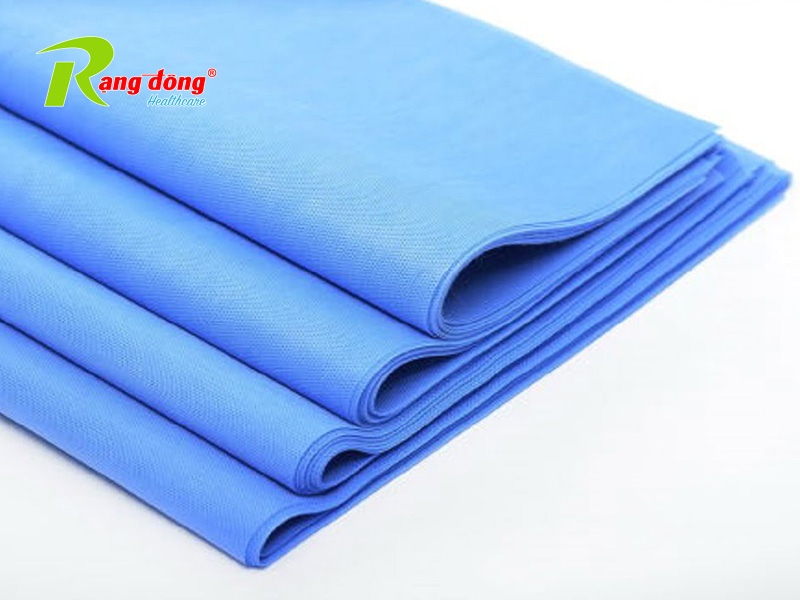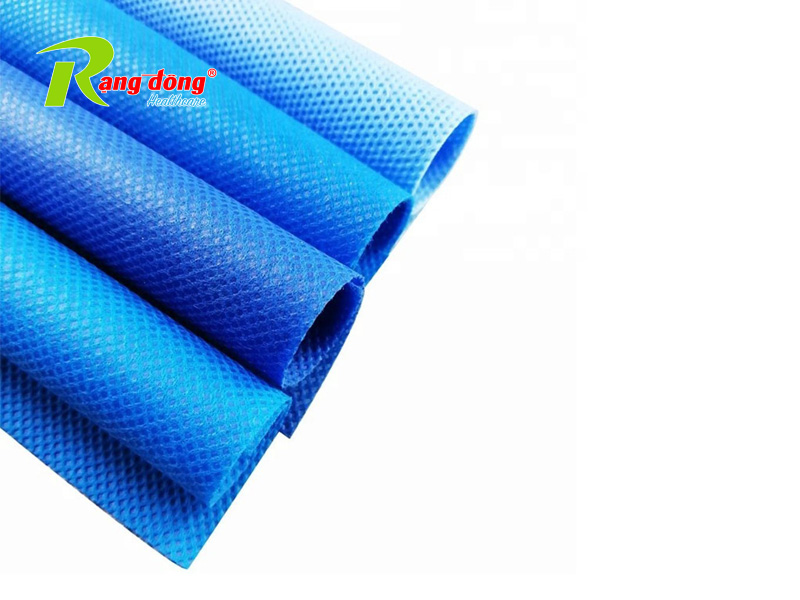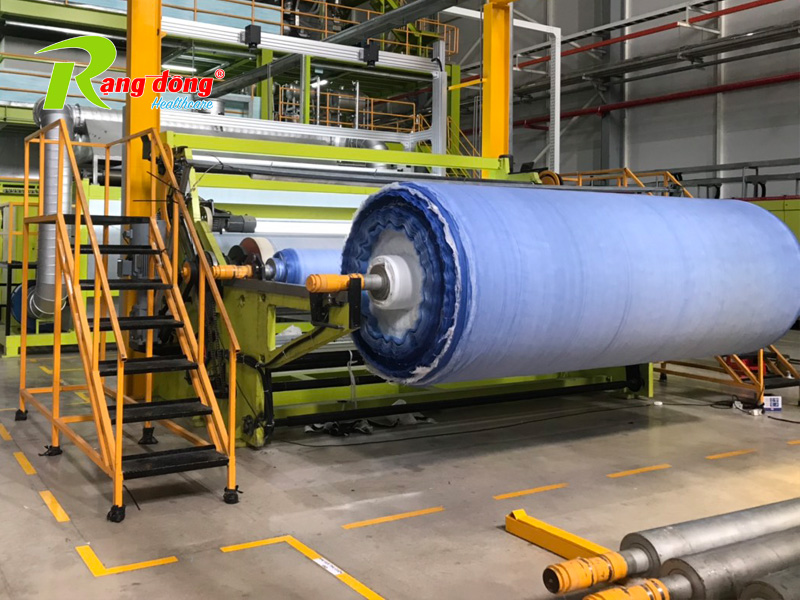7 most common types of non-woven fabrics with PE film lamination on the market Product information 18/05/2023
Welcome to this article on the 7 most common types of non-woven fabrics with PE film lamination in the market, provided by Rang Dong Healthcare! Did you know that non-woven fabrics with PE film play a crucial role in various fields, from healthcare to industry and consumer goods? Before we explore these fabrics, let’s imagine a world without them. That would mean no soft non-woven mattresses, no safe non-woven packaging, and no easy-to-use non-woven adhesive tapes. Indeed, our lives would be quite challenging without the presence of these PE film-laminated non-woven fabrics!

Why are PE film-laminated non-woven fabrics so popular?
Before delving into the details of each type of PE film-laminated non-woven fabric, let’s understand why they are so popular in the market. The first thing to know is that non-woven fabrics, or non-wovens, are not created by weaving fibers like traditional fabrics. Instead, the production process involves bonding small fibers together using heat or pressure.

The main benefits of PE film-laminated non-woven fabrics are their diversity and wide-ranging applications. By combining non-woven fabric with PE film, we can create high-quality products with waterproof, dustproof, UV-resistant, and many other features. This makes them ideal materials for various applications.
The most common types of PE film-laminated non-woven fabrics
Waterproof PE film-laminated non-woven fabric
First, let’s start with the waterproof PE film-laminated non-woven fabric. This type of fabric is widely used in the construction and industrial sectors to create waterproof materials for various projects and products. With excellent water resistance, this fabric ensures that no water or moisture can penetrate unwanted areas. A typical example of using waterproof PE film-laminated non-woven fabric is in the production of waterproof membranes for roofs, water tanks, and other waterproofing projects.
UV-resistant PE film-laminated non-woven fabric
Next, we have UV-resistant PE film-laminated non-woven fabric. This fabric is coated with a layer of PE film that can resist harmful ultraviolet (UV) rays from the sun. With strong UV resistance, this type of fabric is often used in the production of protective gear such as sun hats, UV-resistant clothing, and UV-resistant curtains. Additionally, UV-resistant PE film-laminated non-woven fabric is used in the manufacturing of umbrellas to protect users from harmful UV rays.
Dustproof PE film-laminated non-woven fabric
Dust is always a daily concern, especially with the advancement of technology and numerous construction projects. Using dustproof PE film-laminated non-woven fabric is a smart choice. With a tight non-woven structure and a waterproof PE film layer, this fabric can prevent dust and small particles from infiltrating our living and working spaces. This is particularly useful in construction, maintenance, and cleaning projects.
Flame-resistant PE film-laminated non-woven fabric
Safety is a crucial factor in many industries, especially in industrial and consumer applications. With the combination of non-woven fabric and flame-resistant PE film, we have flame-resistant PE film-laminated non-woven fabric. This fabric is fire-resistant and not easily ignited, ensuring maximum safety in environments with potential fire hazards. Flame-resistant PE film-laminated non-woven fabric is commonly used in the production of flame-resistant products such as protective workwear and flame-resistant covers for electronic devices.
Waterproof PE film-laminated non-woven fabric
Have you ever wondered why the packaging of food products or other consumer goods doesn’t get wet? That’s thanks to the use of waterproof PE film-laminated non-woven fabric. This fabric has the ability to prevent water from seeping through, keeping the contents dry and safe. Additionally, waterproof PE film-laminated non-woven fabric is used to create durable and waterproof packaging for industrial products such as chemicals and fertilizers.
Moisture-absorbing PE film-laminated non-woven fabric
Another notable feature of PE film-laminated non-woven fabric is its moisture-absorbing capability. This fabric can absorb and retain moisture, helping to maintain a humid environment for medical and healthcare applications. Moisture-absorbing PE film-laminated non-woven fabric is commonly used in the production of medical products such as wound dressings, medical tapes, and hygiene pads.
Thermal-insulating PE film-laminated non-woven fabric
Last but not least, let’s not forget about thermal-insulating PE film-laminated non-woven fabric. This fabric has high thermal insulation capabilities, helping to maintain stable temperatures and minimize heat loss in insulation applications. For example, thermal-insulating PE film-laminated non-woven fabric is used in the production of insulation materials for homes and industrial buildings.

Above are the 7 most common types of PE film-laminated non-woven fabrics on the market. From waterproofing, UV resistance, dustproofing, flame resistance, and moisture absorption to thermal insulation, each type of fabric has unique features and widespread applications in various fields. Using PE film-laminated non-woven fabrics ensures not only quality and performance but also convenience and safety in our daily lives.






